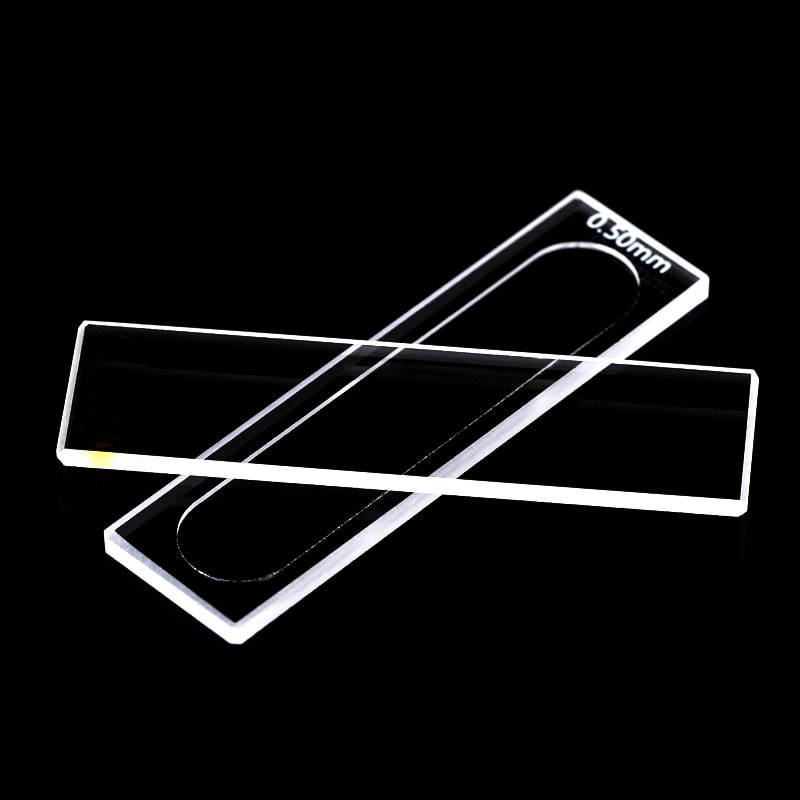Spectrophotometry is a cornerstone of scientific research and a technique that reveals the secrets of light absorption and transmittance at certain wavelengths. Cuvettes are the vessel at the center, which houses the samples that are to be studied. It may appear simple but their intricate structure, from the length of the path to the choice of material that they are made of, can provide precise data about substance concentration and the purity of the substance. Explore the fascinating world of cuvettes, and their dimensions. They impact the outcomes of all research.
Power of Cuvette Path length
Imagine a light beam passing through a specimen. What happens is largely dependent on the cuvette’s path length or the distance at which light travels through the liquid. A standard 1cm path length cuvette can be the most popular choice for laboratories, and is able to strike a balance between sensitiveness and practicality. What is the significance of this? The longer the distance extended, the greater amount of light will be absorption. This will increase the amount of light absorbed by weak samples. A shorter path could make huge difference when it comes to highly concentrated solutions, such as proteins or nucleic acids. This helps reduce dilution and protect precious samples, as well as decreasing the preparation time. What is the takeaway? The art of matching the length of the path to samples’ requirements is a fine technique that increases reliability.

Image credit: cuvet.co
Cuvette Dimensions The Look at more than what meets the eye
It’s not just about the volume of liquid that can be contained in the vessel, it’s equally about how the vessel is used by the spectrophotometer. Cuvettes are available in a range of sizes and shapes, each tailored to specific requirements. For instance semi-micro cuvettes that have smaller dimensions and thicker walls tackle tiny sample volumes such as a few microliters an uncommon biological extract. Thicker walls shrink the internal space, allowing light to pass through a sample that is condensed without loss of the drop. Compare this with a standard cuvette, it’s a stark contrast less pipetting steps with less chance for error, and results that hold when tested. This clever trick proves that the size of a cuvette isn’t just a number, but an approach.
The 1cm Length of the Path Cube: A Lab Favorite
Why is it that the 1cm cuvette path length is so widely used in research? It’s the ideal size for biological studies, where sample quantities are typically limited and every milliliter is important. This traditional design provides an even measurement of absorbance without overburdening the detector. It’s not the one that will work for everyone. If you swap it out for a cuvette having an entirely different geometry or length, like one that is used for studying emission, the results can be extremely distorted. Picking the right tool is crucial, and don’t just use the one you are familiar with. A mismatched cuvette can be compared to a poorly tuned instrument.
Material Matters That Go Beyond Size and Path
Cuvette dimensions tell only half the story material choice seals the deal. High transmission rates of quartz and glass cuvettes permit light to be transmitted without interference. They’re strong, durable and suitable for demanding spectroscopy jobs. On the flip side plastic cuvettes can bring value and convenience to the table. There’s no requirement for clean-up or cross-contamination. Simply take the cuvettes and discard. They are ideal for tests using aqueous solutions or DNA/RNA tests. What’s the tradeoff? The trade-off? It’s a classic case of purpose dictating preference quartz for the purist, plastic for the pragmatic.
Perfect Practice and Precision
Cuvettes’ appeal lies in their ability to adapt. Smaller length paths paired with spacers can handle concentrated samples with ease, while larger vessels handle bulkier volumes. The clarity of the result is determined by the length of the pathway, the size and the material employed. Think of a lab testing the amount of protein. A semimicro cuvette is a shorter path, which removes the need for dilution and delivers reliable data faster. Compare that with a careless switching of cuvettes in the middle of an experiment and you’ll notice that the numbers drop. The smallest of details can have the greatest impact on spectrophotometry.
Cuvettes are small but they play an important role. The vessels are available in a variety of sizes including the cuvette that has a 1 cm length path to ones that are custom made. They can bridge the gap between insight and sample. If you’re seeking purity or concentration the right cuvette can transform a great measurement into a superior one.